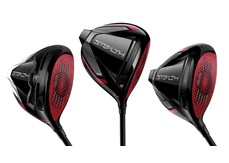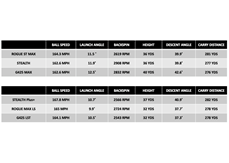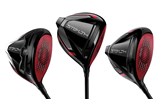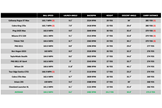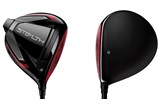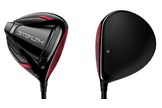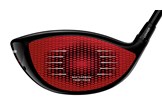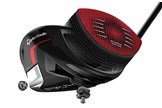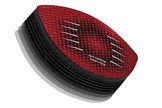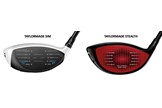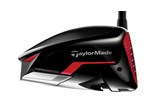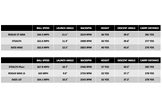TaylorMade Stealth, Stealth Plus+ & Stealth HD Drivers Review
Last updated:
-
At a glance
- TG Rating
- Owner Rating
What we say...
Thanks to the brand new carbon fiber face the TaylorMade Stealth, Stealth Plus+, and Stealth HD drivers improve ball speed, carry distance, and on-course consistency.
Only a handful of drivers have ever changed the game as we know it. So rare is true revolutionary drivers, over the last four decades just a handful of models have genuinely changed the direction of our game and a collection of them have made it into the best drivers in golf.
We’re thinking TaylorMade’s first steel-headed driver (the Pittsburgh Persimmon that launched in 1979), Callaway’s first oversized Big Bertha steel driver, and the brands smash hit titanium, Great Big Bertha. Alongside those TaylorMade’s first movable weight driver, the R7, and Callaway’s first Epic (which had Jailbreak technology connecting the sole to the crown) are both worthy of a place amongst the game-changing elite too.
All in that’s just five drivers that have forced the competition into playing catch-up over the last 40 years.
During those four decades wooden drivers have had their day, steel-headed drivers have come and gone, and now TaylorMade reckon titanium face drivers are hitting the buffers too. TM are so confident of the performance of their new carbon fiber face Stealth driver, chief of Metalwood Creation – Tomo Bystedt told us “thanks to the benefits of titanium plateauing TaylorMade will never make a titanium face driver again”. TaylorMade’s radical answer is morphing itself into a brand new Carbonwood company.
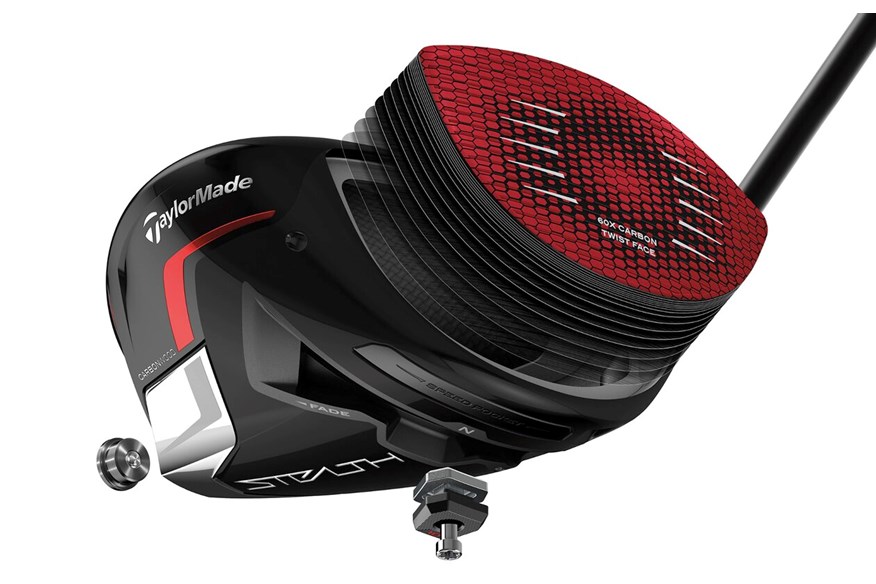
Carbonwoods might sound new, cool, and different but carbon fiber drivers aren’t entirely a new idea. Others have tried and failed to use super lightweight carbon fiber in driver construction before (think the Callaway C4), yet TaylorMade insist the new Stealth will be no flash in the pan. Thanks to material and process breakthrough Stealth brings the weight saving and increased energy transfer benefits of carbon fiber to driver faces, so golfers can expect additional ball speeds, without losing the sound and feel DJ, Rory, Fleetwood, and Morikawa expect from a TaylorMade driver.
WATCH: Best 2022 Driver video
What you need to know about the TaylorMade Stealth carbon fiber driver face
Why carbon fiber?
Carbon fiber isn’t an obvious choice for a driver face, as there’s a need to be strong and flexible whilst having the capacity to withstand frequent high-impact collisions. But where previous carbon fiber drivers had faces twice as thick as a traditional titanium driver face, which inhibits flex and deadens sound, TaylorMade’s engineers have developed their own half-thickness carbon fiber specifically for Stealth.
And the company say it’s unlike anything the brand have used on driver crowns before. The new development means Stealth driver faces can be constructed from 60 layers of strategically orientated carbon fiber strips yet maintain the same amount of flex and sound as the face of the previous SIM2 Max titanium driver.
How does the Stealth driver face work?
TaylorMade’s initial goal for exploring carbon fiber driver faces was saving weight. Since starting down this road though their boffins have found other benefits to using carbon fiber faces too. Let’s deal with weight first.
A traditional titanium driver face weighs 43g, by switching to lighter carbon fiber there’s a significant 39.5% weight saving using a 26g lighter carbon alternative. The 17g of freed-up mass is then repositioned to create the ledge the face is bonded to with extra mass being spread throughout the body.
It’s the extra weight removed from the face that TaylorMade say makes a carbon fiber face more efficient at transferring energy to the golf ball at impact. Think about it like a car crash, where a car with a lighter front end and heavyweight in the boot will create more force during a collision than the same-weight car with mass evenly distributed throughout its entire body.
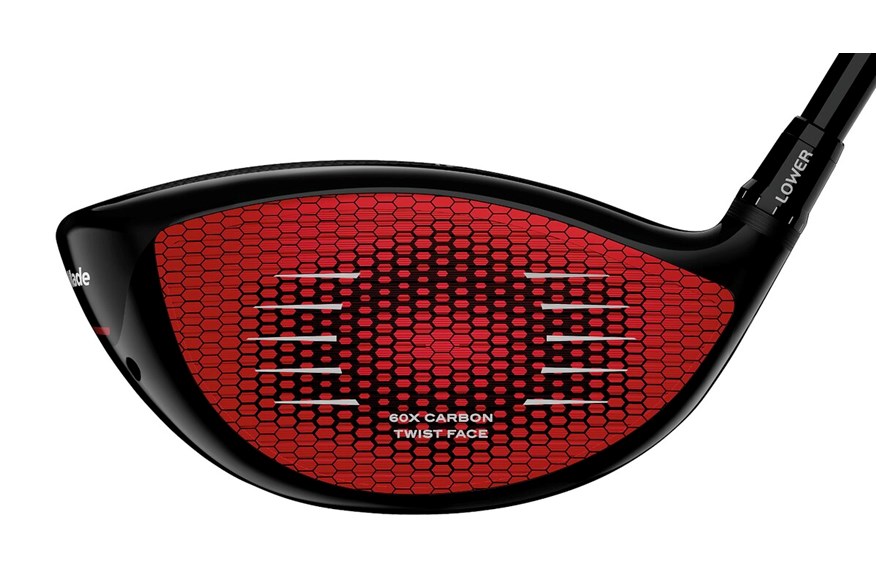
This is no ordinary carbon fiber face
TaylorMade’s engineers had to build the Stealth’s carbon face from the ground up, as using existing materials would have meant the face is 1cm thick, which would have offered no flex and deadened sound.
First TM worked out how to make carbon fiber at half the thickness of what was currently available, then they worked out how many layers were needed, as well as the shape, size, and profile of each layer to get just the right durability, sound and speed, whilst also maintaining the brands ball speed protecting Inverted Cone Technology on the back of the face.
TaylorMade say every face produced is scanned for imperfections as air bubbles cause failures, and because carbon is such a low-friction material each face needs a nanotexture, (hence the pattern) and PU coating (which is very similar to the cover of TaylorMade’s TP5 ball) to ensure consistent spin no matter whether the face is dry or wet.
But wasn’t TaylorMade’s Speed Injected Twist Face (first introduced on the M5 and M6 drivers) already on the legal limit?
Driver face spring was first limited in 1998, at the time the ruling bodies tested drivers for COR, but the test was time-consuming, as it involved firing golf balls at a driver face from a high-speed air cannon and took 45 minutes to complete.
In 2004 the ruling bodies switched to CT testing, which involves dropping a pendulum onto driver faces, which made the test portable and much quicker to conduct. Making it possible for players to get drivers checked each week out on tour.
What TaylorMade’s crack team of engineers have come to realize is that lots of modern drivers hit the CT limit but fall below the previous allowable level for COR. So many drivers are actually COR losers. This difference though can be leveled up thanks to the physics and consistency of using a carbon fiber face, so with Stealth golfers get a legal CT with higher COR, which of course equals extra ball speed and distance.
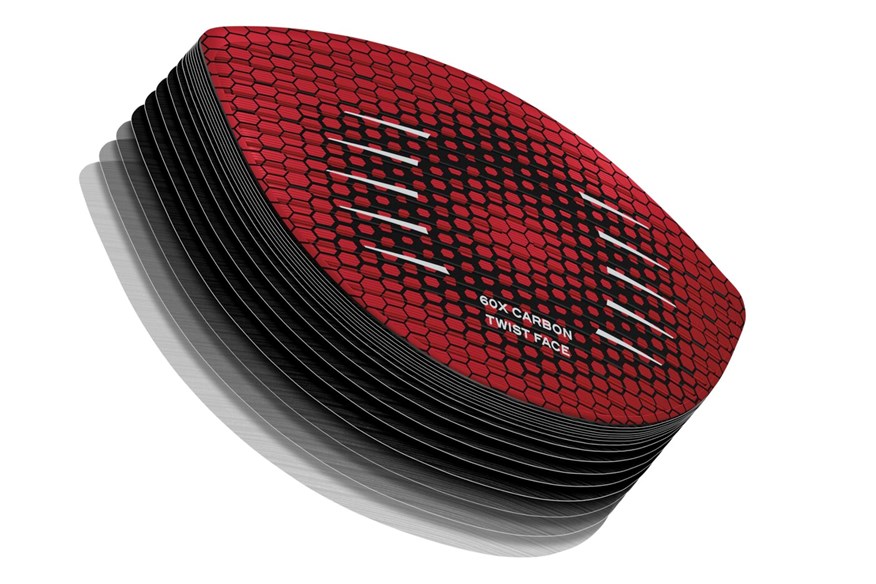
20 years in the making
TaylorMade say they’ve been exploring carbon fiber driver faces since the year 2000. Their first prototype was created in 2003, it had a titanium cover over a carbon fiber base. In 2013 the company launched a limited-edition Japanese-only Gloire Reserve driver with the brand’s first carbon fiber face.
In 2016 new manufacturing techniques led to the creation of the first 60 layer carbon face, the brand say they’ve been working on the new Carbonwood since 2018.
What does Stealth’s carbon fiber face do?
As weight is removed from the Stealth’s face it’s possible to make the face bigger, which inspires extra confidence, but also means a larger portion of the face can be at the maximum allowable CT limit. The idea improves forgiveness and shot-to-shot consistency, so golfers get more predictability and less drop-off between on and off-center hits, without impeding the aerodynamics of the previous SIM and SIM2 drivers.
TaylorMade say the new material also does away with face fatigue and CT creep, so unlike a traditional titanium face it won’t weaken over time. It means in 2022 anyone choosing a TaylorMade driver will be on the edge of the rules without ever inadvertently over-stepping the mark, like Xander Schauffele in 2019 at the Open Championship.
Face size example:
SIM SIM Max SIM2 Max Stealth
3470 mm2 3570 mm2 3750 mm2 4150 mm2
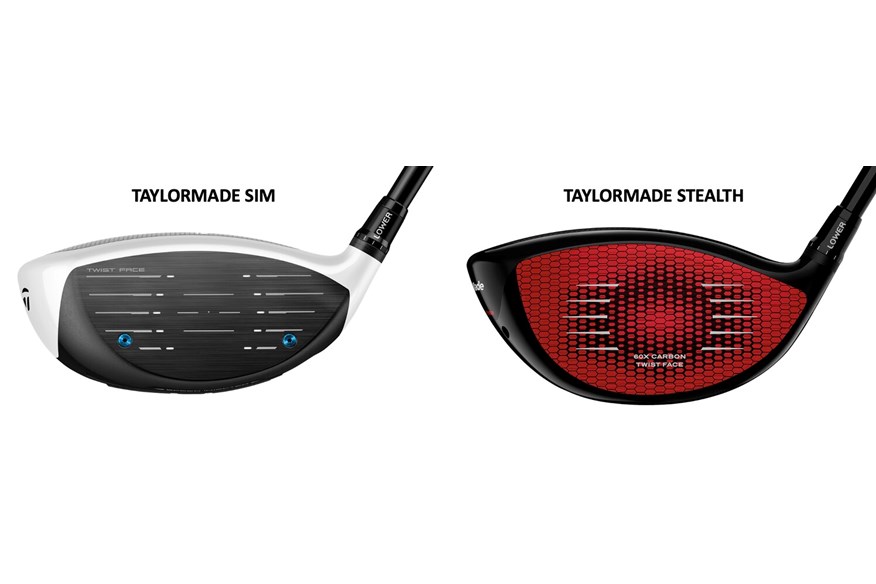
How much difference can you expect to see with a carbon fiber face?
Obviously, TaylorMade have done a ton of testing with golfers from tour pros to their much more average test team. And results have thrown up some impressive gains.
Legally on average, the brand are saying they can claim 1.1mph of extra ball speed over the previous SIM2 family, but during initial seeding, gains of 5 – 6 mph have not been uncommon.
The brand hasn’t seen such impressive gains since the M1 in 2015 and R300 Series in 2001 (the R300 Series were created before COR limits were introduced).
What you need to know about the TaylorMade Stealth, Stealth Plus+, and Stealth HD drivers
TaylorMade has slotted its new carbon-fiber face into three driver models, each designed to cover the playing preferences of everyone from Rory McIlroy to Rory Bremner. Along with the new face material, all three drivers have several things in common:
Bigger faces: Thanks to the material switch there’s less weight located at the front. It means Stealth faces can be bigger, to inspire confidence which often also leads golfers to hit shots harder as there’s less fear of missing the center. The Stealth’s face is 11% bigger than the previous SIM2 and a full-on 20% bigger than the original SIM in 2019.
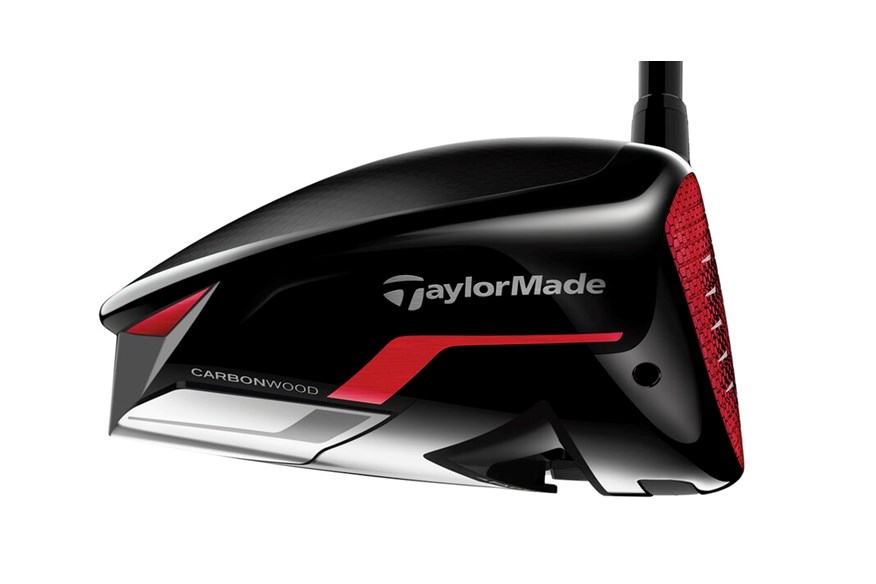
Speed Shaping: Since the original SIM TaylorMade drivers have been optimized for speed in the downswing and into impact, even though Stealth models have bigger faces they’re aerodynamically optimized and come decked out with an Inertia Generator weight at the rear to maximize MOI performance.
Speed Pockets: Speed pockets have been part of TaylorMade drivers for years the Stealth maximizes face flex and ball speeds and produces additional forgiveness on low-face strikes.
But they also have some key differences to make them more appealing to individual players too.
TaylorMade Stealth Plus+ driver
RRP: £499
Lofts: 8°, 9°, 10.5°
Stock shaft: Project X Hzrdus Smoke Red RDX 60 (Mid Flight), Mitsubishi Kai’li White 60 (Low Flight)
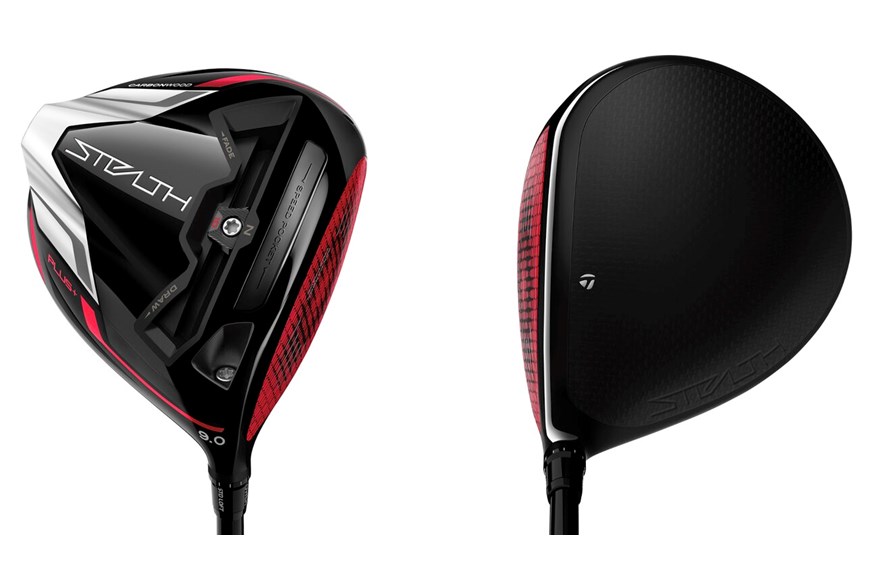
TaylorMade have brought into three-driver families ever since they unveiled the M1, M2, and M2 D-Type back in 2017. The Plus+ is Stealth’s lowest spinning model, it’s the direct replacement for the SIM2 and TaylorMade say the head will lower backspin by 200-300 RPM compared to the standard Stealth.
The model is called Plus+ because there’s a sliding weight track located behind the face, which neither of the other models have. In that track a 10g weight allows golfers to dial in a preferred shot shape and/or boost ball speed by locating the weight directly behind the golfer’s typical impact position.
The model will be at home in the hands of golfers who want to chase distance through lowering spin and players who like either a more workable driver or have a preference to see drives fly with a particular shot shape. Mid (Project Z HZRDUS Smoke Red) and low flight (Mitsubishi Kai’Li White) stock shaft options also allow golfers to alter launch and ball flight characteristics with the Plus+.
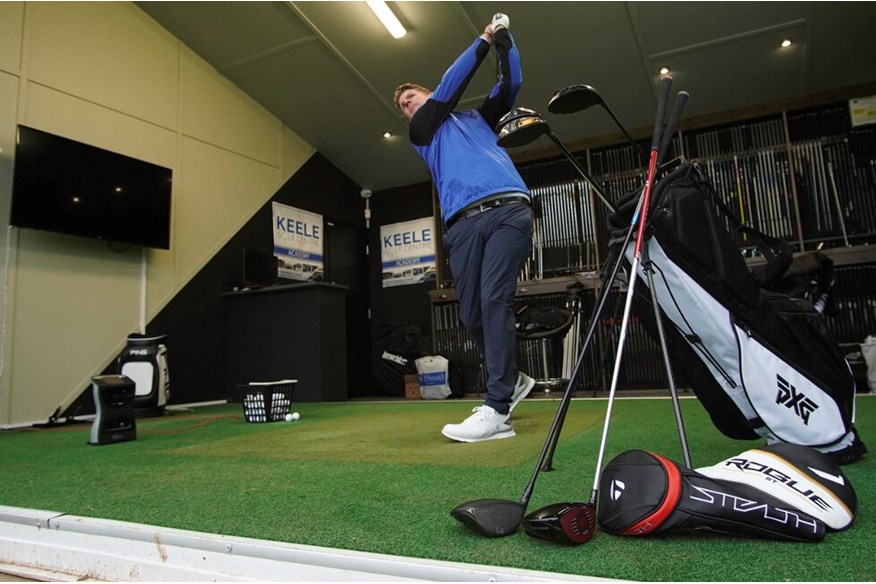
Verdict: TaylorMade Stealth Plus driver
Never in 15 years of testing have we seen a driver outperform its peers by 12 yards of carry distance. Usually, once our pro’s ton of test shots have been averaged there’s no more than a handful of yards covering off the top few models. And a performance difference that small can easily be caveated with “data can be reversed or slightly different on another day testing”. But double-digit carry distance gains, in the hands of our test pro, are utterly unheard of here at TG.
We’ve got to admit we’re pretty shocked by Stealth Plus putting in such a strong performance. We’d tested the model before (in creating our Stealth YouTube video) when it out-performed Callaway and Ping models, with tidy but not ground-breaking ball speed and carry distance gains (2.8 mph of ball speed and 4 yards of carry distance gain over the longest), but those numbers were nothing like what we saw running our full 2022 driver test. The difference in part at least can be explained in switching Neil out of a recommended shaft (that to him felt hard work) and into the stock (low flight) Mitsubishi Kai’Li, and boy are we glad we did.

To put Stealth’s performance into context the model produced a ball speed 1.1mph faster than any low spin driver we hit. By 12 yards, it was the longest driver within the category (it was also our longest overall driver by 3 yards too). The Plus was flat-out best also at protecting ball speed loss on off-centre hits and 2nd best at minimizing carry distance drop-offs (only beaten by PXG’s 0811 Gen4 X by 2 yards or 0.6%). In anybody’s book that’s outstanding across the board performance.
After what we’ve seen we’re comfortable naming the Stealth Plus as our best low-spin driver of 2022, an award we’ve never bestowed upon a single driver (whether low-spin, forgiving or draw-biased) before. We’re certainly not saying everyone will see a gain of 12 yards, that’s just not the case. What we are saying though is if you’re looking at buying a new low-spin driver in 2022, you’re missing out if you don’t at least see what Stealth can offer. The gains you see might be smaller, but whilst other new drivers are touting similar stories to those we’ve heard for a few years (with incremental gains) Stealth and its carbon fiber face are breaking new ground.
How the TaylorMade Stealth Plus compares to other low spin drivers in data (shots hit by TG test pro Neil Wain)
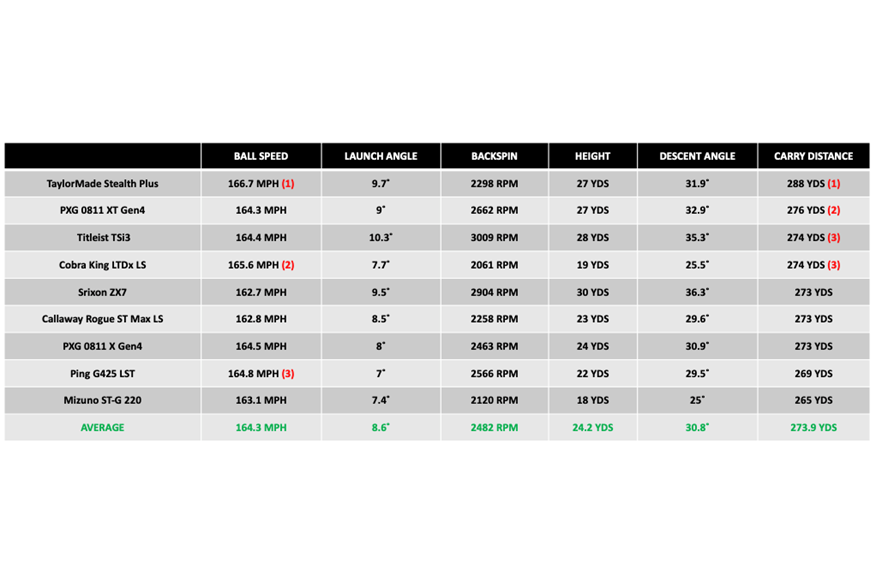
TaylorMade Stealth driver
RRP: £469
Lofts: 9°, 10.5°, 12°
Stock shaft: Fujikura Ventus Red 5
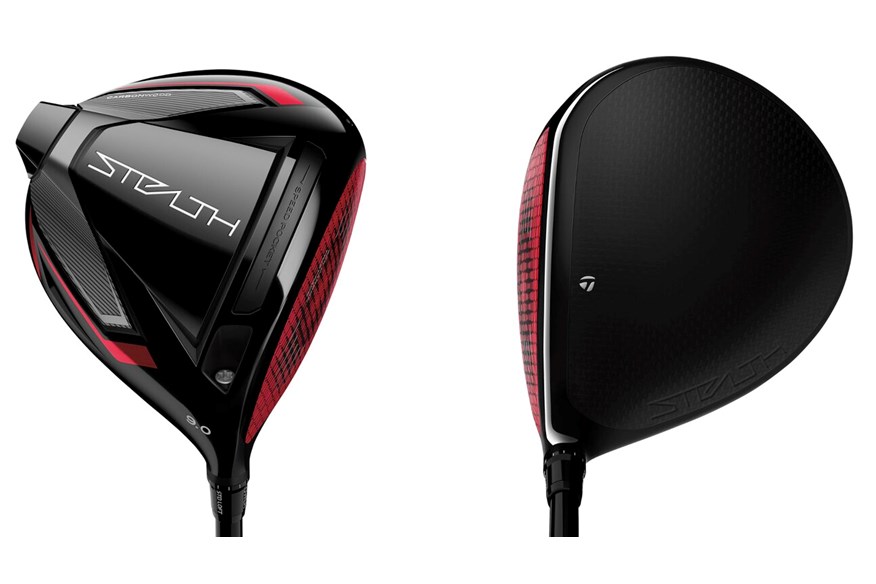
With no sliding sole weight, or needing to tie up any of the mass freed up from the new carbon face to create a track, the Stealth has a 15% higher MOI than the Stealth Plus+. That means golfers get extra forgiveness and ball speed protection when shots are sprayed across the driver face. Stealth is very much the mass market model which means it will be the most popular and biggest-selling within the family.
Like the previous SIM drivers, the standard model has a fraction lighter head (200g vs the Stealth Plus+ at 202g) which is optimized for speed. TaylorMade say thanks to spinning 200 – 300 RPM less than the Stealth Plus+ and because of the mid-high flight, Mitsubishi Ventus stock shaft golfers should see this model as a mid-high launch driver that offers mid-low spin. Compared to the Stealth HD, expect a more neutral ball flight shape, but with similar levels of forgiveness.
Verdict: TaylorMade Stealth driver
The best golf equipment brands make three or more different drivers for very good reasons. One model of any driver family will suit a particular golfer better than the rest, and because one stands out, the others (when hit by the same golfer) can on the surface at least appear less attractive. This is the case with the Stealth in our test pro’s hands.
Because the Stealth Plus suited our test pro so well, the standard Stealth looks like a less solid choice. But be under no illusion for the majority of club golfers that won’t be the case. The standard Stealth will offer a better combination of ball speed and backspin which will optimize carry distance, and thanks to the extra 15% MOI it will be more forgiving and easy to live with on the golf course.

For the Standard Stealth’s extra forgiveness, our test pro gave up 1.8mph of ball speed (versus Stealth Plus, and remember back weighted forgiving drivers never generate the fastest ball speeds), but whilst that led to giving up 14 yards worth of carry distance against the Stealth Plus, the standard model did produce the 4th fastest ball speed of our forgiving category.
By including the Stealth amongst our five best forgiving drivers of 2022 we’re saying we love and can see a benefit in the improved energy transfer concept of a carbon fiber face, we’re not saying everyone needs to go buy one. Our stance is very much we wouldn’t be doing our job if we didn’t highlight how anyone looking to buy a new driver in 2022 should at least have the Stealth family on their shortlist to try.
As we’ve seen for ourselves one model will suit you better than the others, and like us when you find your perfect set-up you might just be mightily impressed with the ball speed numbers it produces.
How the TaylorMade Stealth compares to other forgiving drivers in data (shots hit by TG test pro Neil Wain)
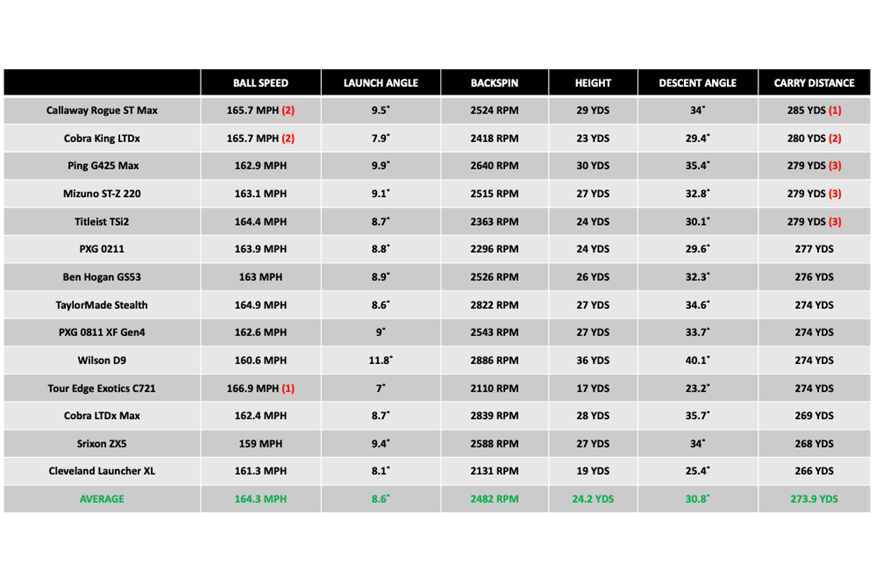
TaylorMade Stealth HD driver
RRP: £469
Lofts: 9°, 10.5°, 12° (10.5°, 12° women’s).
Stock shaft: Fujikura Air Speeder 45, Aldila Ascent Ladies 45 (Womens)
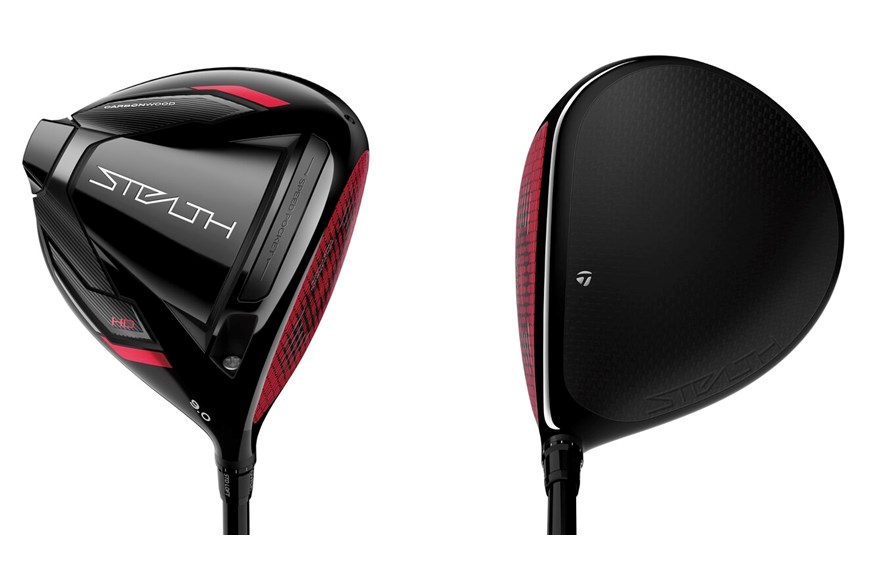
HD stands for High Draw, which means the model is specifically tailored to eliminate the distance-sucking slice that afflicts tons of club golfers. But what’s new with the HD, that’s not always the case with all draw drivers, is not sacrificing forgiveness to get a right-to-left ball flight. Unbeknown to most golfers is some competitor draw drivers, by inadvertently lumping weight in the heel, accidentally lower MOI and off-center hit forgiveness, that isn’t the case with the Stealth HD.
TaylorMade say the HD thanks to its lighter, higher launching Fujikura Air Speeder stock shaft and adjusted internal weighting is a high launch, mid-spin driver with maximum draw bias. A women’s Stealth HD has the same carbon fiber face and forgiveness tech, with subtle cosmetic differences and its own Aldila Ascent shaft.
Verdict: TaylorMade Stealth HD Driver
Avid equipment fans will know full well that new driver technologies that offer truly improved performance don’t come along that often. Instead, what tends to happen is annual updates and refinements lead to incremental gains each year. So, if you update your driver every five years it’s highly likely you’ll see an improvement in ball speed and/or forgiveness performance.
The last recognized serious driver breakthrough was back in 2017 when Callaway connected the sole and crown (Jailbreak) of the Great Big Bertha Epic. Lots of golfers didn’t realize at the time, but Jailbreak was a technology that made the rich, richer. So if you already had club speed in abundance, by forcing the head to take on more load (which you needed plenty of speed to do) you got more out of Jailbreak. It meant more moderate-speed players typically didn’t gain nearly as much as their faster swing-speed playing partners.

What our 2022 test results show are Stealth’s carbon fiber face doesn’t just improve energy transfer at higher swing speeds. There’s additional ball speed performance to be had here for more moderate-speed players too. And that’s really exciting.
Compared to this year’s other draw drivers the Stealth HD was 2.2mph faster than our test average (and 0.6 mph faster than the second-fastest Cobra King LTDx Max) in terms of ball speed. It was also Simon’s longest-carrying driver by 4 yards over the Cobra King LTDx Max. But what’s more impressive is how those numbers compare to his five-year-old Ping G400 SFT driver.
Thanks to testing both we can see there’s a 1.6mph ball speed gain by switching to Stealth HD, and thanks to the difference in the spin that could add up to a 21-yard carry distance gain, which of course is hugely significant. And because Simon is a very average-speed player that’s a gain ordinary club golfers could be looking at for themselves this year.
How the TaylorMade Stealth HD compares to other draw drivers in data (shots hit by TG Equipment Editor – Simon Daddow). The highlighted red Ping G400 SFT was Simon’s gamer driver at the time of testing.
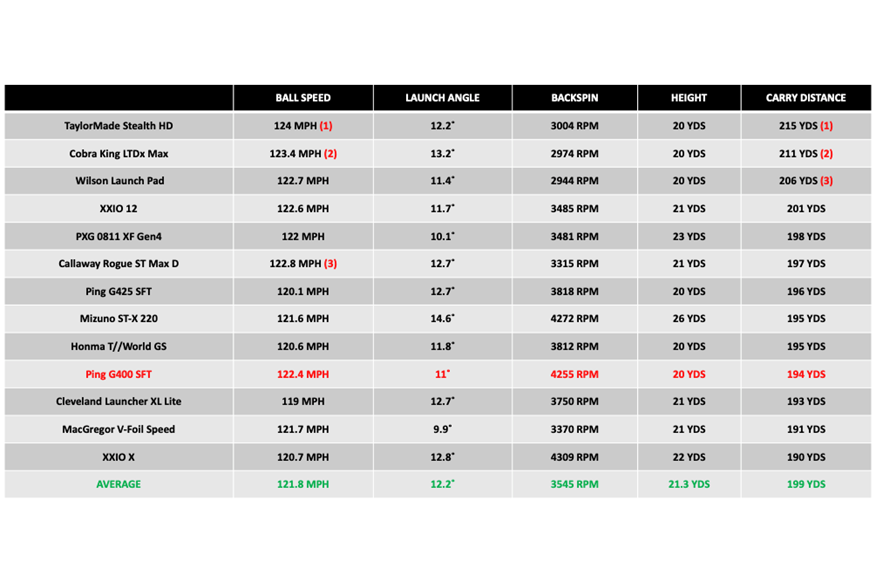
TaylorMade on the Stealth driver
“In the mid-2000s, our Research team developed an understanding that the weight of the face can affect impact efficiency, more specifically, the lighter the face, the more efficient the impact and the better the ball speed. We realized Titanium faces could only take us so far and carbon would be the face material of the future.
This breakthrough design of a lightweight carbon face in Stealth has created a whole new starting line, a new era of drivers, a new threshold of performance, and a new platform for more innovation.”
Brian Bazzel, Vice President of Product Creation
“The technological innovation of our nanotexture technology brings the entire face together and was a key to making this driver a reality. Without this revolutionary cover design, we could not have achieved the launch and spin performance required to extract the optimal performance in dry as well as wet conditions.
Tomo Bystedt, Product Creation, Carbonwood Drivers
“The 20 year journey to today is a reflection of the engineering and R&D teams at TaylorMade that never gave up on the idea of a carbon face driver. The technical challenges in creating a driver face with a new material are vast.
Through two decades of work our team was able to solve various hurdles and create numerous technological innovations in order to bring today’s most advanced and precise driver to market.”
Todd Beach, Senior Vice President R&D and Engineering
READ NEXT
– How good are the TaylorMade P790 irons?
– Best drivers for beginners and high-handicappers
BECOME A TODAY’S GOLFER MEMBER: Unlimited access to premium content and exclusive rewards!
Product Information
TaylorMade Stealth Plus+ Driver
RRP: £499
Lofts: 8° / 9° / 10.5°
Stock shaft:
Mid Flight - Project X HZRDUS Smoke Red RDX 60
Low Flight - Mitsubishi Kai'li White 60
Stock grip: Lamkin Crossline 360
Adjustable hosel: Yes (+/- 2°)
TaylorMade Stealth Driver
RRP: £469
Lofts: 9° / 10.5° / 12°
Stock shaft: Fujikura Ventus Red 5
Stock grip: Lamkin Crossline 360
Adjustable hosel: Yes (+/- 2°)
TaylorMade Stealth HD Driver
RRP: £469
Lofts: 9° / 10.5° / 12°
Stock shaft: Fujikura Air Speeder 45
Stock grip: Lamkin Crossline 360
Adjustable hosel: Yes (+/- 2°)
Visit the TaylorMade website here
